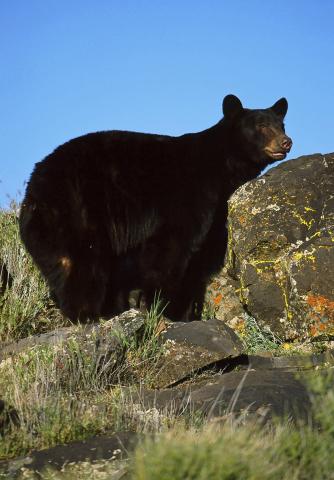
Releasing rehabilitated bear cubs into the wild
What: In late spring and early summer, a handful of bear cubs were orphaned in areas across the state. DWR biologists took those cubs to a Utah State University rehabilitation facility in Millville, where they’ve spent the summer and fall gaining weight and preparing to hibernate. Two of the older bears were released earlier this fall, and the remaining five bears will be released the last week of November. (See footage of the first release at http://bit.ly/cub_release.)
See sandhill cranes at Pelican Lake
What: Sandhill cranes are large, beautiful birds with a unique, haunting call. They migrate through Utah every year, and are always fun to see and hear, especially in large numbers. Tomorrow, the DWR is hosting a free, public crane-viewing event at Pelican Lake.
Seeding the Tank Hollow Fire burn area
What: DWR habitat biologists are working with the U.S. Forest Service to reseed more than 1,000 acres burned during the Tank Hollow Fire. Habitat managers will work with a pilot to aerially drop a seed mix that produces grasses, flowering plants and shrubs. As they grow, the plants will stabilize the soil and also provide food for wildlife.
What: Bullhogs are heavy machines that the DWR uses to improve habitat. The bullhogs tear out and shred pinion/juniper trees, leaving room for widespread sagebrush growth. Over the next few weeks, the DWR will use a bullhog near the town of Orangeville to mulch pinion/juniper trees. In a few years — long after the loud, messy machinery is gone — this area will offer prime habitat for mule deer and other species.
Ride along on mule deer classification
What: Many hunts are over, and winter hasn’t quite arrived — that means it’s time to take a closer look at Utah’s mule deer populations. Starting in the middle of November, DWR biologists will go into the field to check on the deer herds. Specifically, they’re looking at the numbers of bucks, does and fawns, and how those numbers compare to each other within the herds. They will use this data to assess whether the herds are meeting management objectives.